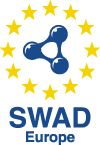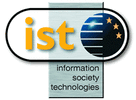

The goal of this deliverable is to explore the interaction between various security- and trust-related mechanisms, and to identify enough of the purpose and content of these existing standards to indicate how they might be integrated in a Semantic Web trust and policy management framework. In this deliverable, we give further progress on the work, and some sample implementations.
Completed 2004-07-15
Comments on this document should be sent to the public SWAD-Europe mailing list, public-esw@w3.org,
The goal of this deliverable is to explore the interaction between various security- and trust-related mechanisms, and to identify enough of the purpose and content of these existing standards to indicate how they might be integrated in a Semantic Web trust and policy management framework. In this deliverable, we give further progress on the work, and some sample implementations.
The scope of this deliverable is extremely wide and accordingly, the deliverable is divided into several major parts, set out in this introductory document.
In D11.2, we discuss frameworks and scenarios for Trust in the Semantic Web. We present a RDF vocabularies and an architecture to implement trust on the Semantic Web.
In D11.2, to illustrate the use of trust and security in web applications where the Semantic Web can provide some useful tools, we discuss some scenarios for using RDF in support of Trust and Access Control.In particular, we then go on to develop one particular scenario in particular, and explore the use of reasoning in CWM to securely configure a home network.
Brian Matthews, CCLRC.